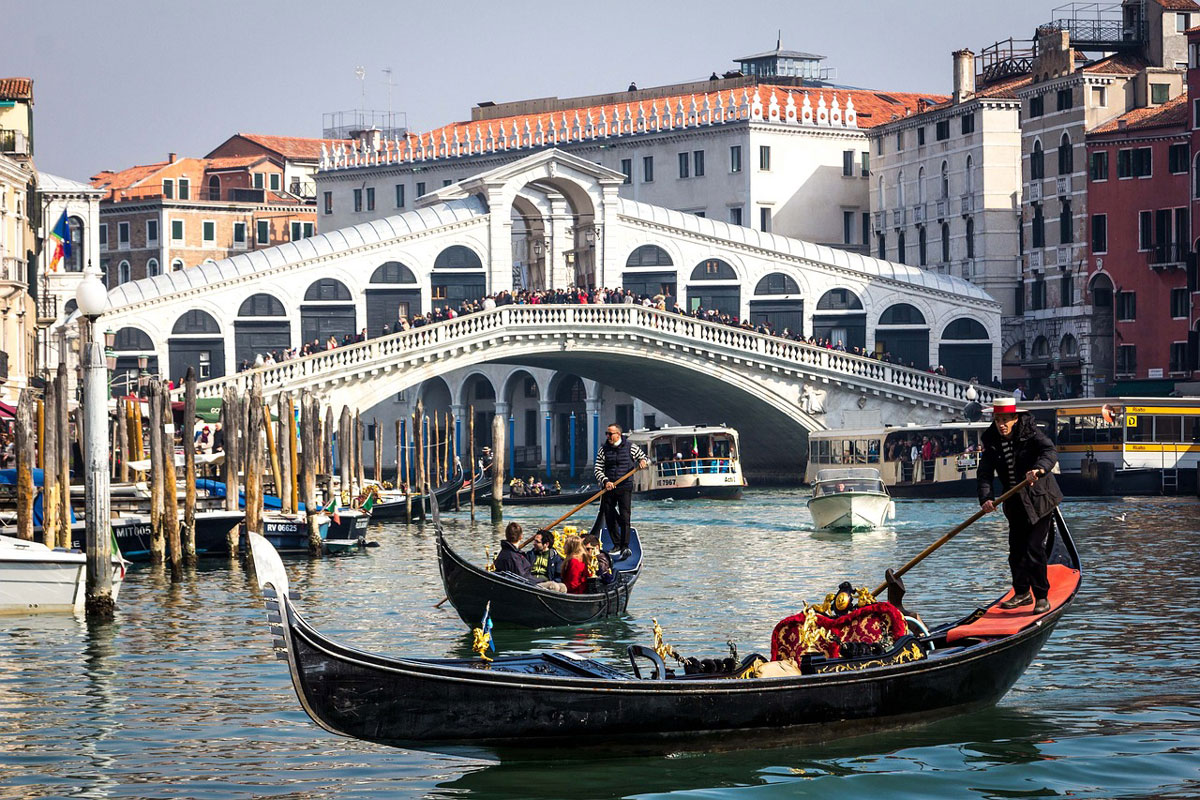In Venice, there are new restrictions for tourists and new scandals related to the weight of city guests who want to ride on gondolas. However, the point is not the obesity of passengers, but the economic benefits.
Venice should be quiet at night
In the municipality of Venice, July 25 approved new restrictions in the historic part of the city. Local bars, cafes, and restaurants will now close at 2:00 am, but should be quiet from 11:00 pm: no music or activities, either inside or outside. The sale of alcoholic beverages must stop before 01:30.
In addition, grocery stores (except ice cream parlors) must close at 23:00, and food outlets that offer takeaway food must close at 20:00.
Authorities explain the new policy as a desire to “protect the right of citizens to rest” and put an end to “unrest caused by night traffic in the historic center.” According to the municipality, the tightening comes amid an increase in fights, cases of anti-social behavior, and excessive drinking, especially among tourists. This year, Venice has become popular for celebrating graduations and bachelor parties, especially among Canadians and Australians.
Tourists eat too much
However, the night “diet” can benefit tourists. At the request of the gondoliers, the municipality changed the capacity of the gondolas back in 2020: for example, instead of six, only five people are allowed on board the gondola da solo, which offers a classic tour of the city’s canals. The maximum capacity of the gondolas and parades that serve as taxis on the Grand Canal was reduced from 14 to 12 passengers three years ago.
During the pandemic, Venetian boaters were ready to take tourists without regard to this requirement, but in 2023 they “remembered” about it and even children and teenagers are denied boarding. “The tourists are fat and overweight,” one of the gondoliers explained to a guide who asked for a family of six, including a physically handicapped child, to be put on the boat.
The story received publicity and heated discussion on social networks, again raising the question of how fair the current limit is. Andrea Balbi, the president of the Venice Association of Gondoliers, had to explain himself, but he, however, did not change the general position of his trade union.
“Compared to ten years ago, tourists now weigh more. And when they come to Venice, they also eat a lot. Pizza, pasta – all this adds even more weight to them. Therefore, instead of putting tourists on the scale before boarding, we are limiting the number,” he said.
It’s not about weight, it’s about economic benefits
However, a well-known gastronomic website in Italy conducted its investigation: as it turned out, it was not the weight of the tourists that mattered, but the economic benefits of the gondoliers. The bill for boarding the gondola is a fixed amount of 80 euros: for this money three years ago six people could ride through the canals, and now only five. Those. there were fewer passengers, but there was no recalculation.
If we proceed precisely from the total mass of passengers, then often two families (four adults + two children under 12 years old) can easily sail in one gondola. However, in this case, based on the limit of 6 people on one side, people are denied travel together. Therefore, tourists have to take two gondolas, doubling the profits of cunning gondoliers.

